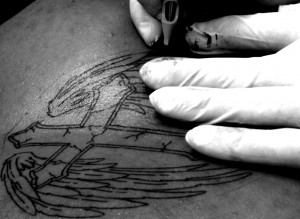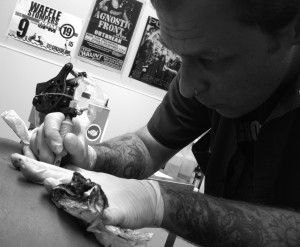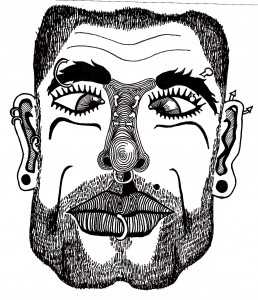Why We All Resemble Fishing Lures
By Amy Obarski
First there’s the anticipation. Should I do it? Should I wait longer? What will my parents think? Is it going to hurt? Then there’s the rush. That feeling when the needle touches you and every hair stands on end as it penetrates your skin. And finally there’s the release. When the needle leaves your system and you are free to gaze upon this new addition to your body.
Body modification is anything but a new art form. Because various tribes and ethnicities around the world have practiced it, there is no recorded origin. It ultimately encompasses a wide range of practices that include more than your everyday piercing or tattoo.
Some of the more obscure forms of body alteration are neck rings (ancient African and Asian culture), pearling (genital beading), implants (insertion of metal between the skin and the bone) and eyeball tattoos/jewelry (involving corneal surgery). But despite these graduated forms of body modification, the basic tattoos and piercings have been around for thousands of years, and they continue to rise in popularity today. But why is body modification so popular? The answer is nothing short of “because it feels good.” It involves the chemical reactions that occur in your body when you experience pain. According to Dr. Helen Lathrop, a clinical psychologist based in Toronto, Ontario, you experience the common flight or fight response when you get something pierced or tattooed.
When your body experiences any sort of pain, your brain tells your body to send out pain-suppressing chemicals (adrenaline) which gives you a sense of strength (or rush) that empowers you. Like if you’re a mother and your child is stuck under a Hummer, you get this sudden burst of energy and you raise the massive automobile so your child can escape … then you blow up the Hummer production plant for faulty manufacturing.
But your body cannot sustain this level of chemical influence for very long, so your brain balances out the adrenaline with neurotransmitters (dopamine) that gives you a sense of euphoria. You can commonly experience this in a sneeze or orgasm.
Because of this chemical reaction, people become addicted to body modification and ultimately strive to recreate this sensation as many times as humanly possible. I speak from experience on this point.
In my first week in Ithaca, a few friends and I went down to Steihl’s Body Modification Station on the Commons, and I looked through their catalogue. I wound up getting my helix (the upper cartilage in my ear) pierced. In that split second when the needle broke through my cartilage, I felt this huge rush. I felt empowered, even though I was clutching the bench as hard as I could out of fear.
Honestly, I would have considered myself dangerous after that session. I wanted to go right upstairs and search for a tattoo. Thankfully, the shop was closing as I was leaving. Undoubtedly, I am going to return for another piercing.
The next time you look at someone decked out in body jewelry and art, don’t judge; just realize their expression is a result of human sensation. Billions of humans experience these sensations that others around the world have been feeling for thousands of generations, and we keep coming back for more.
Amy Obarski is a freshman cinema and photography major who sets metal detectors off with her corset piercing. E-mail her at aobarski1@ithaca.edu.



